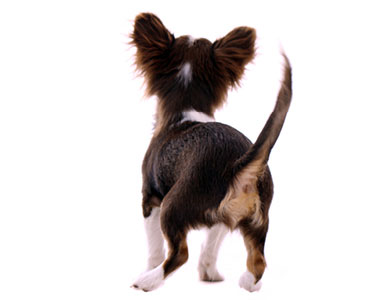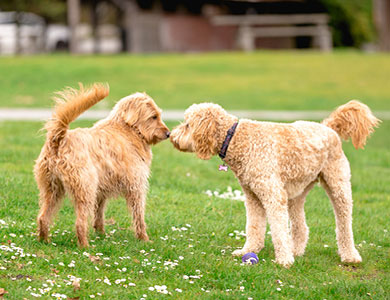Every part of a dog’s body is there for a reason, and it’s important to understand the role that each one plays. The following are some unusual and interesting facts about dogs’ tails.

Tails are made up of bones
Tails are made up of flexible bones, similar to the vertebrae in the spinal column. But did you know that a dog’s tail is more mobile and flexible than its own legs? Tails can, in fact, move in several different ways and adopt a variety of positions at rest.
Although dogs’ tails differ in terms of length, thickness, length of hair and whether or not they curl up over the dog’s back, tail movements are quite similar. It is important to consider that the shape of the tail is relevant to each dog breed. For example, northern breeds such as huskies use their long, thick tails to cover their noses in cold weather.

A question of balance
The flexibility of dogs’ tails allows them to move quickly and efficiently under a variety of circumstances. Water dogs, for example, use their tails as rudders while they swim. Dogs also use their tails during sports activities such as agility training to make quick turns. You might find it fascinating to know that police dogs use their tails to climb walls.
A form of emotional communication
Of course, dogs use their tails to communicate with other dogs and even directly with humans. Tails are an essential means for dogs to express their emotional state.
Dogs are able to successfully express several emotions with their tails, including joy, anger, fear, curiosity, excitement and doubt. We mistakenly believe that a wagging tail necessarily means that a dog is happy, but it can mean quite the opposite. A wagging tail indicates a state of excitement or agitation that can be associated with happiness or anger.

Wagging tails also contract the muscles surrounding the anal glands underneath the tail, to the left and right of the dog’s anus, spreading the dog’s unique scent and allowing it to better communicate with other dogs.
According to a study published in the journal Current Biologydating back to 2013, the direction of a dog’s tail wag is meaningful. Apparently, a dog that wags its tail to the right is more relaxed and confident than a dog that wags its tail to the left, which suggests that the animal is stressed or unsure.
Newborn puppies and Narwhal, the unicorn puppy
Did you know that puppies do not wag their tails until they are about 30 to 50 days old? Some of you may also remember that, in November 2019, an American shelter shared photos of a puppy named Narwhal that had a tail growing out of its forehead. This extra tail (it also had a normal tail) was inert, and the puppy could not control it like its real tail. The news story raised a great deal of interest among potential adoptees, who found this characteristic particularly unusual.




